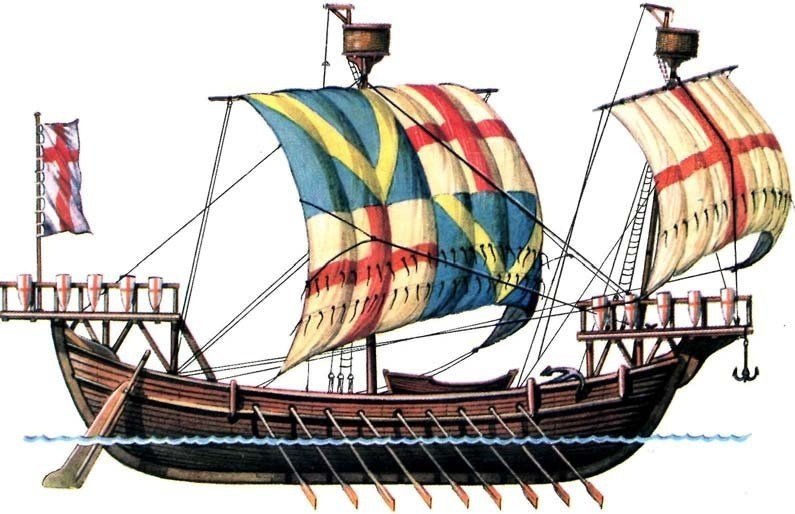
Genoa to England: The Flag, Pandolce
Genoa to England: The Flag and Pandolce
The connection between England and Genoa stretches back a long way, from seafaring and protection of the seas to food culture and traditions. Two of the most obvious examples of this heritage are St George's Cross , England's national flag, and Pandolce , Genoa's classic festive bread.
The flag – a protection on the seas
During the Middle Ages, the Genoese Republic dominated trade in the Mediterranean. Its flag, a red cross on a white background , was a symbol that commanded respect and served as protection for Genoese ships. By the 11th century, Genoa had established itself as a powerful maritime nation, and its merchant fleet was one of the strongest in the region.
From the 12th century onwards, the threat from North African pirates , particularly Barbary pirates from present-day Algeria, Tunisia and Libya, increased. To protect their trading interests and avoid attacks, English ships began to fly the Genoese cross ensign , as the Genoese navy was feared and respected. Through an agreement with the Doge of Genoa, England was granted the right to use the flag in exchange for an annual tribute , which gave their ships free passage in the Mediterranean.
During the 13th and 14th centuries, the St George's Cross became increasingly associated with England, especially after King Edward III made Saint George the nation's patron saint in the 14th century. Although England was by now a stronger naval power, the flag continued to be a central symbol in its warfare and seafaring.
In the 16th and 17th centuries , as England became a global naval power, challenging both Spain and the Netherlands at sea, the St George's Cross was the primary flag of the English navy . During this time, it was also incorporated into the British flag, the Union Jack , when England and Scotland were united in 1606.
Even in the 18th and 19th centuries , as Britain grew into the world's most powerful maritime empire, the connection with Genoa remained. Genoese sea captains and merchants continued to be a part of the Mediterranean economy, and the St George's Cross still adorned British ships, both civilian and military.
Over time, the original connection between England and Genoa faded, but the legacy of the Genoese flag lives on today in England's national flag – a red cross on a white background, just like the one that once flew over Genoa's proud merchant fleet.
Pandolce – a taste of Genoa in England
Trade between England and Genoa brought not only maritime protection but also cultural influences, particularly in the field of food. Pandolce , a traditional Genoese Christmas cake filled with dried fruit, nuts and candied citrus, is very similar to the English Christmas pudding and fruitcake . Through the frequent trade, England gained access to important ingredients such as dried fruit and spices from Genoa and other parts of the Mediterranean. The inspiration from pandolce is clearly visible in the English Christmas cakes, which developed with a similar flavour profile and tradition of long shelf life.
A historical legacy that lives on
This connection between Genoa and England is an example of how trade and seafaring shaped not only political and economic relations, but also cultural and gastronomic traditions. The next time you see the English flag flying or take a bite of a juicy Christmas cake, remember the long journey from Genoa to England – a story of protection on the seas and a tasteful legacy.


